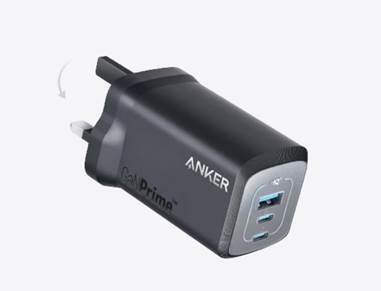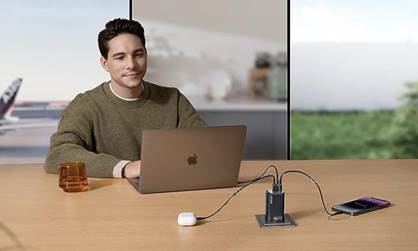Your
laptop charger just
stopped working, and now you face a dilemma—should you buy the expensive
original charger or try a cheaper third-party option? Many people assume OEM
(original equipment manufacturer) chargers are always better, but that’s not
necessarily true. While some laptops do require their specific charger, others
can safely use well-made alternatives. The key is knowing when you can save
money and when you shouldn’t take risks. In this article, we’ll explore the
real differences between original and third-party chargers and help you make
the safest, most cost-effective choice.

1. When Original Chargers Are Crucial
Some
laptops, especially business-grade models and gaming rigs, have proprietary
charging systems that tightly control power delivery. Manufacturers sometimes
use custom voltage regulation or communication chips that only work with their
chargers. Using a generic charger in these cases may result in slow charging,
overheating, or even a complete failure to charge. Additionally, some
warranties explicitly state that using non-OEM chargers voids
coverage—something to consider if your laptop is still under protection. If
your laptop has a unique charging port (rather than USB-C) or requires high
wattage (over 100W), sticking with the original charger is usually the safest
bet.
2. When Third-Party Chargers Work Fine
USB-C PD Compliant Laptops
Modern
laptops that charge via USB-C with Power Delivery (PD) are the easiest to pair
with third-party chargers. Since USB-C PD follows an open standard, any
well-made charger that meets the correct wattage and voltage should work
safely. For example, many ultrabooks like the MacBook Air or Dell XPS 13 can
charge just fine with a high-quality 65W USB-C PD charger. The advantage here
is flexibility—you can use the same charger for your phone, tablet, and laptop,
reducing cable clutter. Just ensure the charger supports the wattage your
laptop requires (usually listed on the original charger).
Reputable Brands with Proper Certifications
Not
all third-party chargers are created equal. While no-name brands from sketchy
online stores may cut corners, reputable manufacturers produce chargers that
meet or even exceed OEM quality. Look for brands that clearly state compliance
with safety standards like UL, CE, or FCC. These certifications mean the
charger has undergone rigorous testing for overheating, short-circuiting, and
electrical interference. A well-engineered third-party charger can be just as
safe and reliable as an original—sometimes even more convenient if it offers
extra ports or a more compact design.

Matching Voltage/Wattage Specifications Exactly
Even
if a charger isn’t made by your laptop’s manufacturer, it can still work
perfectly if it matches the power specs. The voltage must be identical (e.g.,
19.5V for many business laptops), and the wattage should meet or exceed the
original. A slightly higher wattage (e.g., 65W instead of 45W) won’t harm your
laptop—the device only draws what it needs. However, a lower-wattage charger
may struggle to keep up, leading to slow charging or even battery drain during
heavy use. Always check your laptop’s power requirements (usually printed on
the original charger or in the manual) before buying a replacement.
3. Hidden Risks of Cheap Generic Chargers
The
biggest danger with off-brand chargers isn’t just poor performance—it’s safety.
Cheaply made chargers often lack proper insulation, surge protection, or
voltage regulation, which can lead to overheating, electrical shorts, or even
fires. Some counterfeit chargers may look identical to OEM models but use
substandard components that fail prematurely. Another risk is inconsistent
power delivery, which can stress your laptop’s battery over time, reducing its
lifespan. If a deal seems too good to be true (like a $10 “OEM replacement” on
a random website), it probably is. Investing a little more in a certified,
well-reviewed charger is always smarter than risking your laptop—or worse, your
safety.
4. How to Choose a Safe Alternative
Verify UL/CE/FCC Certifications
Never
buy a charger without checking for legitimate safety certifications. UL
(Underwriters Laboratories), CE (Conformité Européenne), and FCC (Federal
Communications Commission) marks indicate that the charger meets strict
electrical safety standards. Be cautious of fake labels—some disreputable
sellers slap these logos on uncertified products. A quick search on the
certifying body’s website can confirm whether a model is genuine. Certified
chargers may cost slightly more, but they’re far cheaper than replacing a
damaged laptop or dealing with a fire hazard.
Match Connector Type and Power Specs Exactly
Even
minor mismatches can cause problems. If your laptop uses a barrel-style plug,
ensure the replacement has the exact same size and polarity (some look similar
but aren’t compatible). For USB-C chargers, confirm that the wattage matches
your laptop’s needs. A 30W charger might work for a lightweight ultrabook but
could struggle with a high-performance laptop. Also, check if your laptop
requires a specific power profile (e.g., some Dell models use a proprietary
USB-C power negotiation). When in doubt, consult your laptop’s manual or the
manufacturer’s website.
Read Genuine User Reviews
Before
purchasing, look for detailed reviews from verified buyers. Pay attention to
comments about long-term reliability, heat management, and real-world
performance. Phrases like “gets too hot” or “stopped working after a month” are
red flags. Trusted tech forums or reputable retailers (like Amazon’s verified
purchase reviews) are good places to find honest feedback. Some third-party
brands have dedicated followings—if multiple users report years of trouble-free
use, that’s a strong endorsement.
5. Best Practices for Mixed Use
If
you occasionally use both an OEM and third-party charger, follow a few simple
rules to minimize risks. First, avoid the cheapest no-name chargers—stick to
certified models from trusted sellers. Second, monitor your laptop’s
temperature during the first few uses; excessive heat could indicate an
incompatibility. Third, if your laptop displays a “slow charger” or
“unsupported charger” warning, heed it—this often means the charger isn’t
delivering optimal power. Finally, consider dedicating one high-quality
third-party charger for travel and keeping the original at home.
Conclusion
Original
chargers are safest for laptops with proprietary power systems, but many modern
USB-C devices work perfectly with well-made third-party options. The key is
avoiding sketchy, uncertified chargers and carefully matching specifications.
If you’re looking for a reliable alternative, Anker’s laptop chargers are
widely praised for their quality, safety features, and compatibility with
multiple devices. Whether you stick with OEM or choose a trusted third-party
brand, prioritizing safety and compatibility ensures your laptop stays
powered—and protected—for years to come.
